Abstract
Five rubella antigens were evaluated in an antiglobulin enzyme-linked immunosorbent assay for rubella-specific IgG subclass antibody. One monoclonal anti-human IgG subclass antibody was used for each of IgG1, IgG2 and IgG4, but two were compared for IgG3. A total of 101 sera were tested from cases of rubella in the distant past and from cases of primary rubella, reinfection and following immunization. Only one serum gave a discrepant result for specific IgG1, being positive with only one rubella antigen, a commercially prepared antigen coated on to microtitre wells (Enzygnost; Behringwerke). No sera contained detectable specific IgG2. Only four sera contained specific IgG4, and this was detectable only with Enzygnost antigen. For specific IgG3 little difference was observed between the two monoclonal anti-human IgG3 subclass antibodies; only two very weakly positive sera gave discrepant results. However, varying results were obtained for specific IgG3 with the different antigens. Enzygnost gave more positive results for specific IgG3 with most categories of sera. It is concluded that the differences between various reports of the rubella-specific IgG subclass profile cannot be explained entirely by the use of different rubella antigens.
Full text
PDF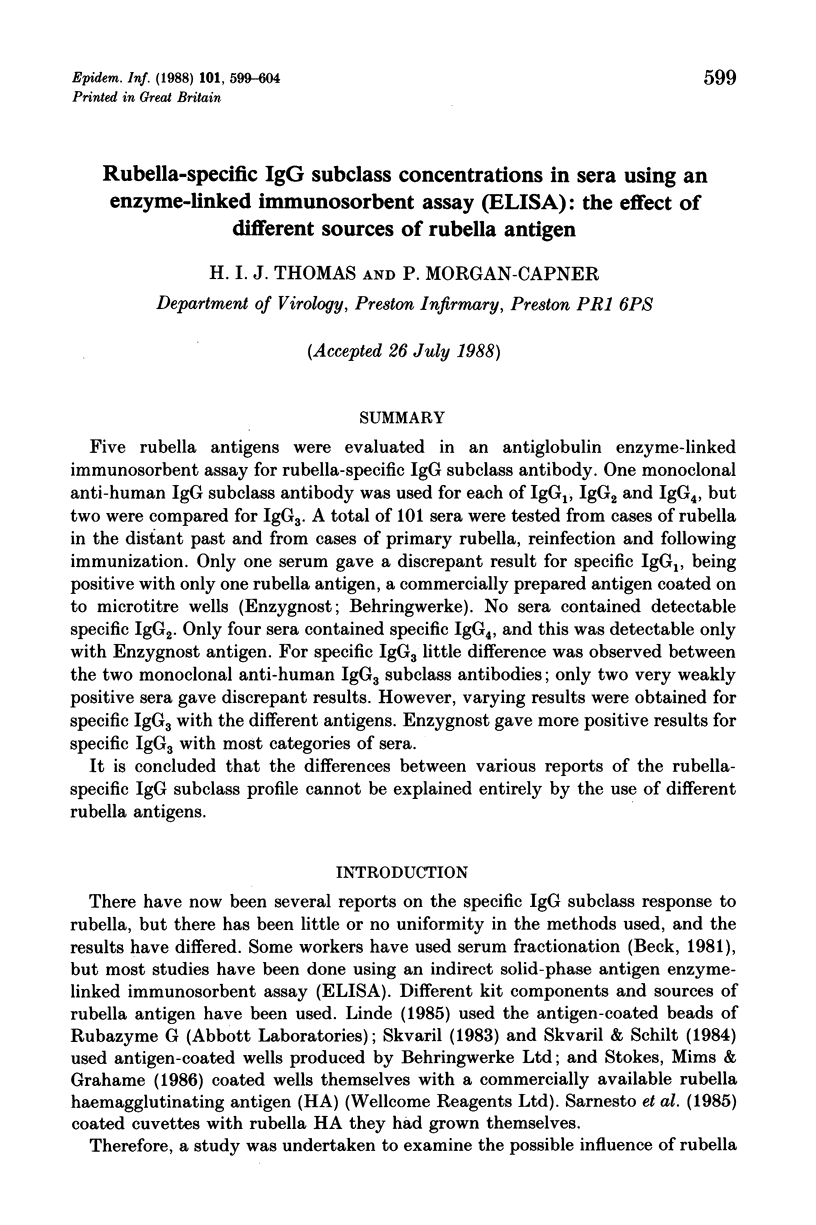

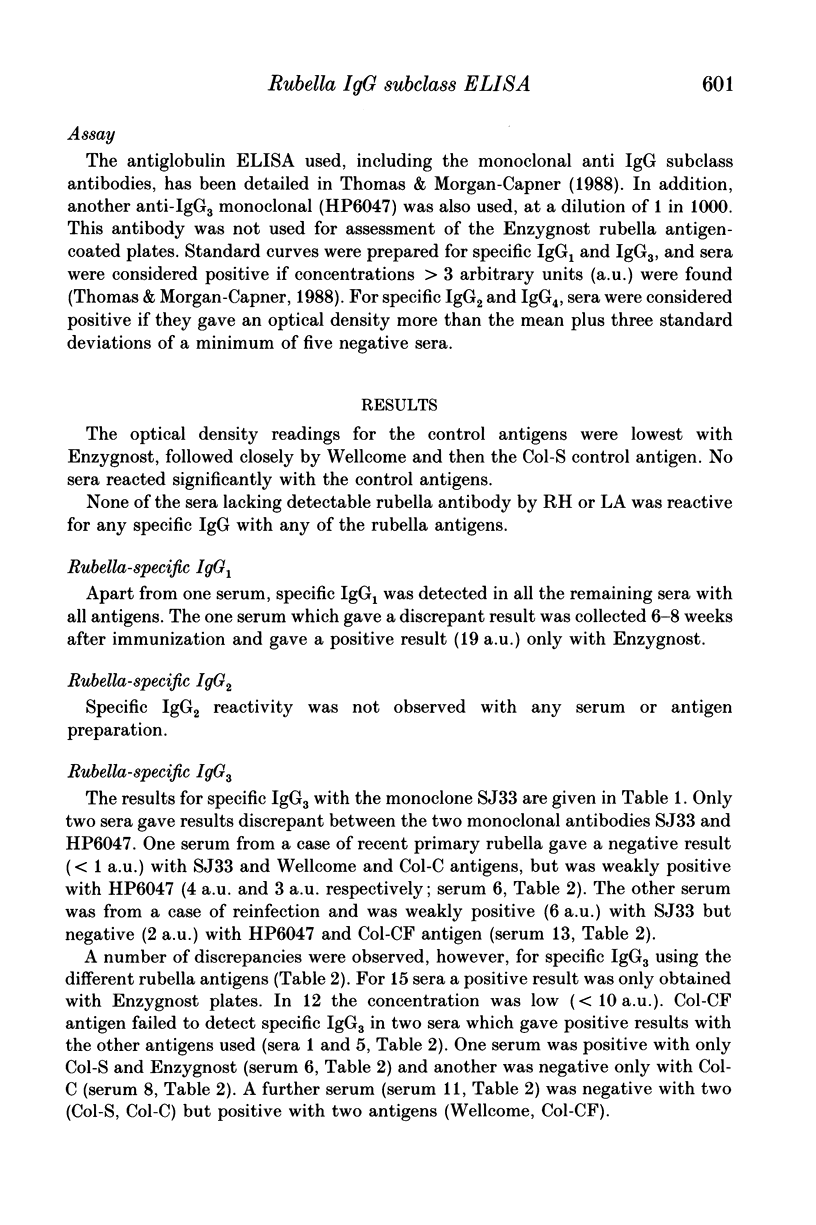
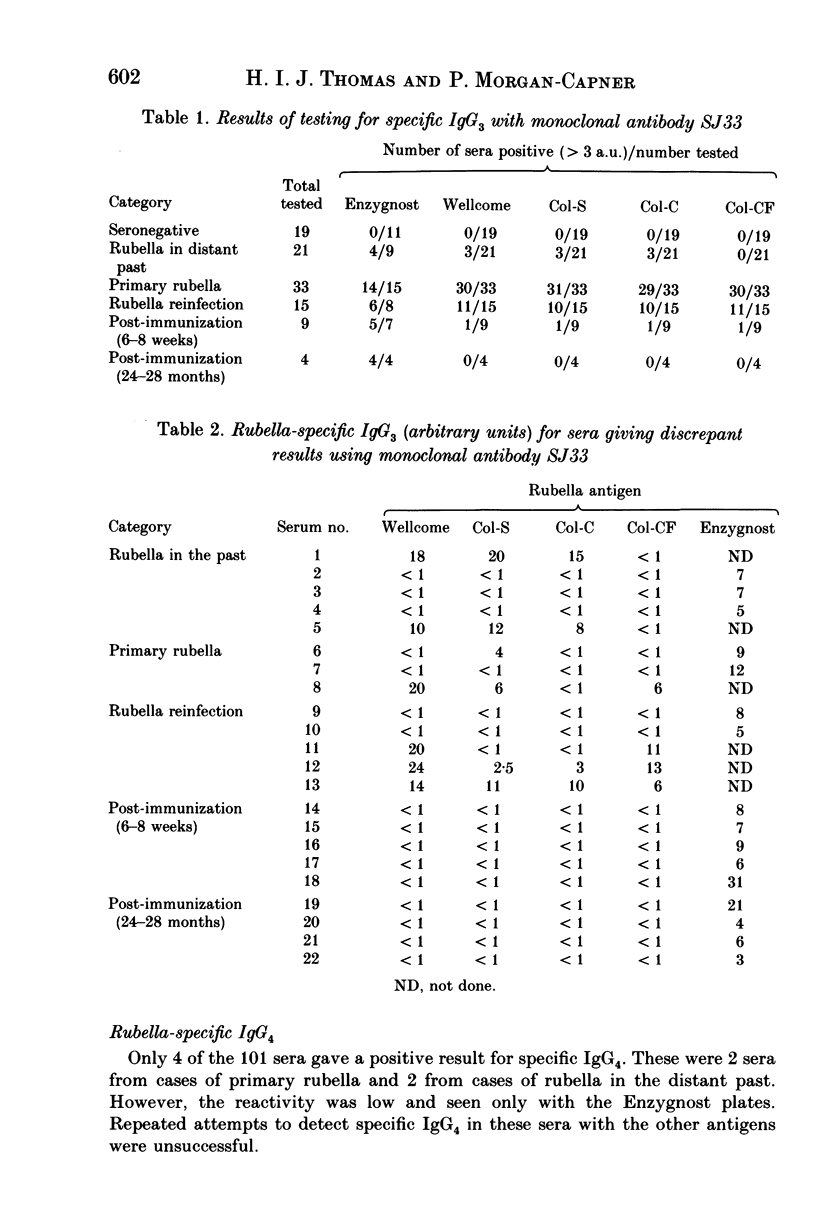
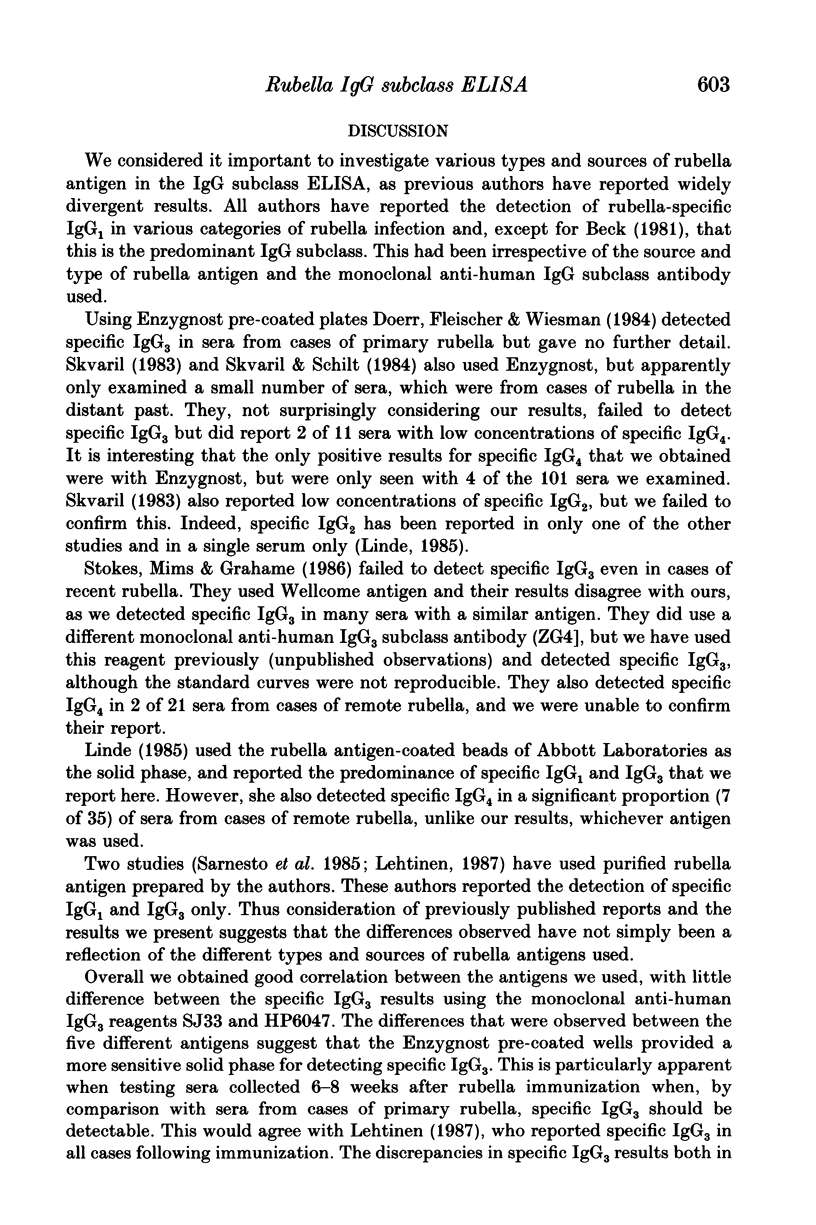
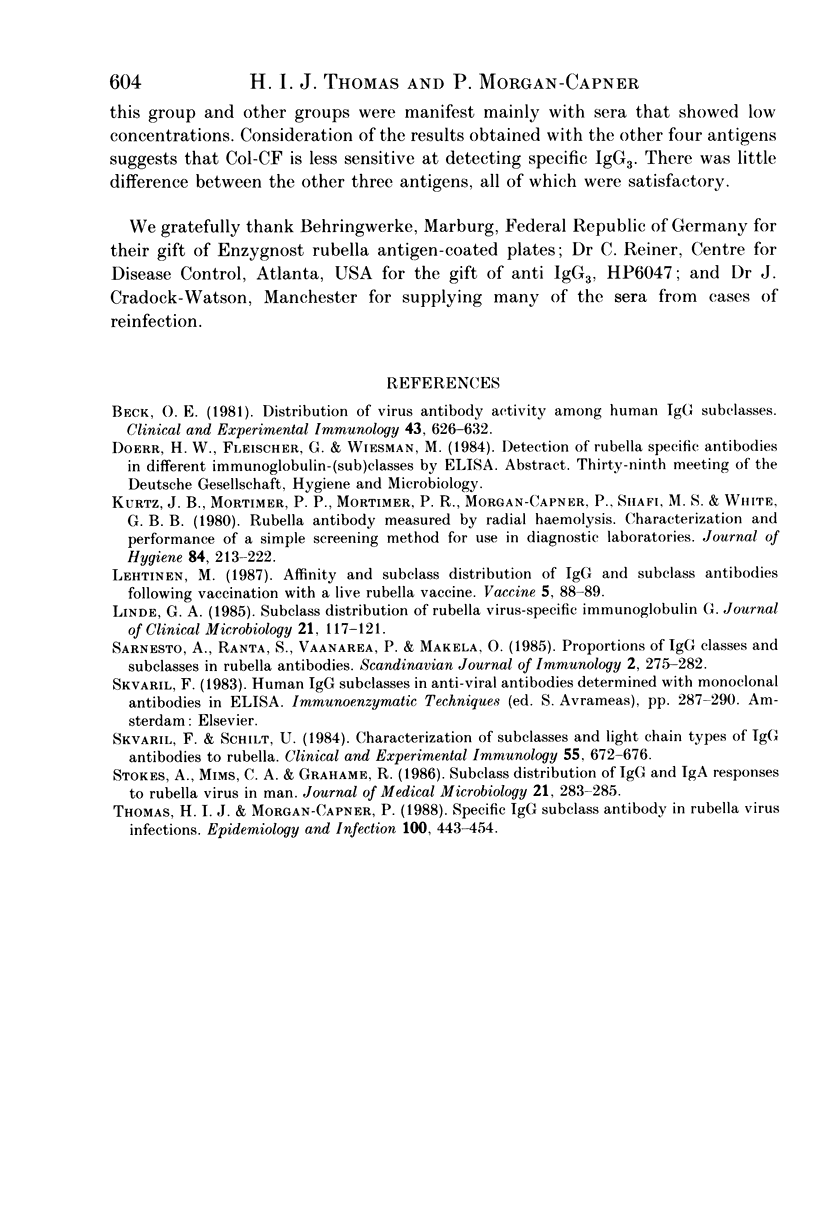
Selected References
These references are in PubMed. This may not be the complete list of references from this article.
- Beck O. E. Distribution of virus antibody activity among human IgG subclasses. Clin Exp Immunol. 1981 Mar;43(3):626–632. [PMC free article] [PubMed] [Google Scholar]
- Kurtz J. B., Mortimer P. P., Mortimer P. R., Morgan-Capner P., Shafi M. S., White G. B. Rubella antibody measured by radial haemolysis. Characteristics and performance of a simple screening method for use in diagnostic laboratories. J Hyg (Lond) 1980 Apr;84(2):213–222. doi: 10.1017/s0022172400026711. [DOI] [PMC free article] [PubMed] [Google Scholar]
- Lehtinen M. Affinity and sub-class distribution of IgG-class antibodies following vaccination with a live rubella virus vaccine. Vaccine. 1987 Jun;5(2):88–89. doi: 10.1016/0264-410x(87)90052-1. [DOI] [PubMed] [Google Scholar]
- Linde G. A. Subclass distribution of rubella virus-specific immunoglobulin G. J Clin Microbiol. 1985 Jan;21(1):117–121. doi: 10.1128/jcm.21.1.117-121.1985. [DOI] [PMC free article] [PubMed] [Google Scholar]
- Sarnesto A., Ranta S., Vänänen P., Mäkelä O. Proportions of Ig classes and subclasses in rubella antibodies. Scand J Immunol. 1985 Mar;21(3):275–282. doi: 10.1111/j.1365-3083.1985.tb01430.x. [DOI] [PubMed] [Google Scholar]
- Skvaril F., Schilt U. Characterization of the subclasses and light chain types of IgG antibodies to rubella. Clin Exp Immunol. 1984 Mar;55(3):671–676. [PMC free article] [PubMed] [Google Scholar]
- Stokes A., Mims C. A., Grahame R. Subclass distribution of IgG and IgA responses to rubella virus in man. J Med Microbiol. 1986 Jun;21(4):283–285. doi: 10.1099/00222615-21-4-283. [DOI] [PubMed] [Google Scholar]
- Thomas H. I., Morgan-Capner P. Specific IgG subclass antibody in rubella virus infections. Epidemiol Infect. 1988 Jun;100(3):443–454. doi: 10.1017/s0950268800067182. [DOI] [PMC free article] [PubMed] [Google Scholar]


